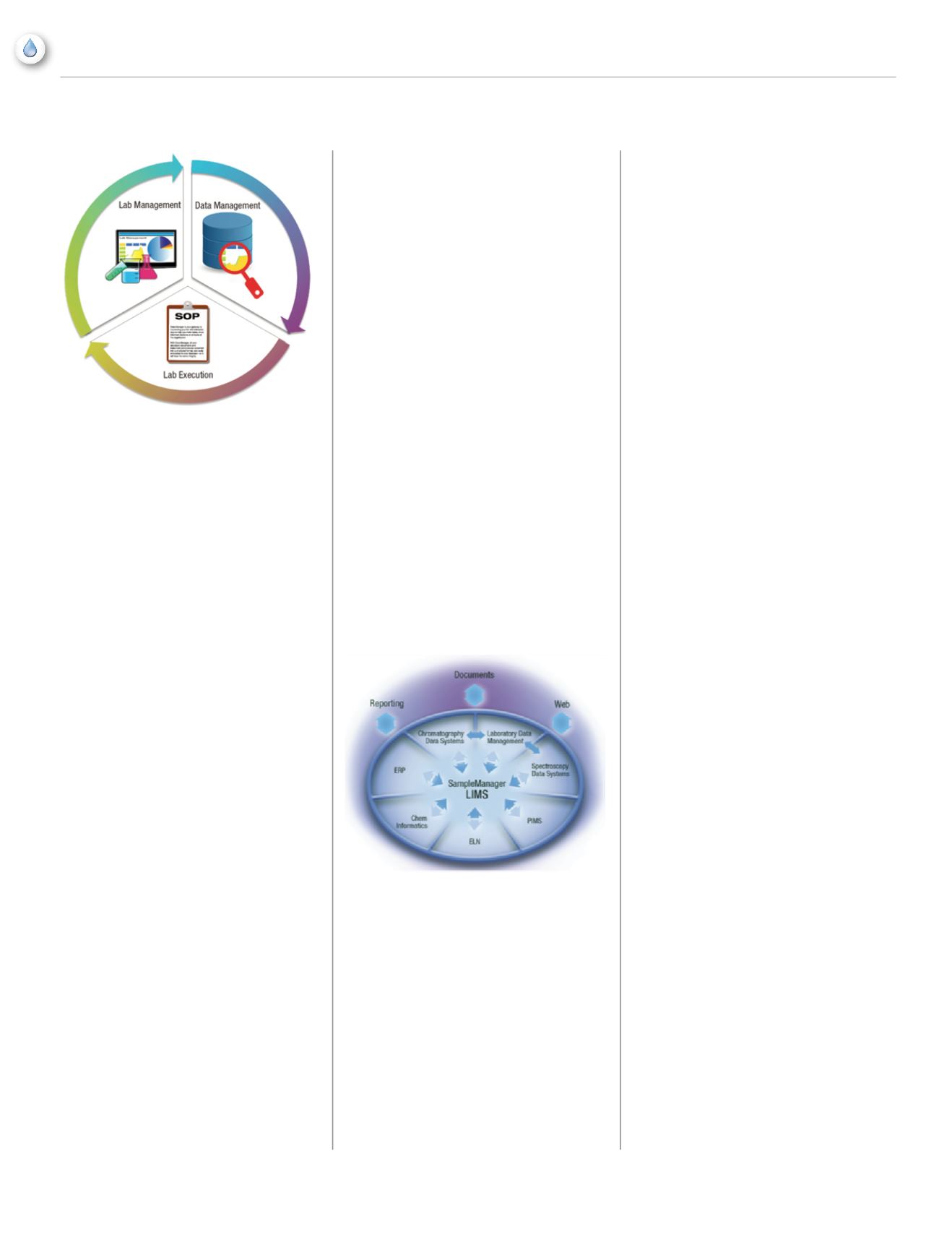

32
NCRWA.COM|
Winter 2015
feature
Historically, defending data has been a time-
and labor-intensive process. Lab employees
had to collect data from dozens of different
sources—including the handwritten notes
of other staff members—to build a case in
support of a disputed result. Even today,
many labs spend as many as 10 hours a week
manually collecting and managing data. This
represents a lot of time spent on manual and
labor-intensive tasks and sometimes it leads
to wasted effort because those lab personnel
could be utilized for more important or
revenue-generating activities.
Fortunately,
comprehensive
data
management software makes it much
easier for today’s labs to defend their data.
Laboratory
Information
Management
Systems (LIMS), which were first
introduced over 30 years ago as basic sample
management and data reporting tools, have
today grown into comprehensive enterprise-
level data management platforms that gather,
monitor and manage all laboratory data and
records. They also serve as the integration
point for all lab instrumentation and, in
some organizations, the electronic link to
enterprise systems such as PIMS, MES and
enterprise systems such as SAP. Having
all this data well-organized and readily
available makes the process of defending lab
results much easier, allowing lab employees
to redirect time to more productive work, and
giving management the assurance that the
lab data they’re relying on for key business
metrics is defensible.
Illustration: Gas Chromatography
Gas chromatography (GC), a common
analytical technique in water laboratories,
serves as a useful example of the sheer volume
of data necessary to support the validity of
a single lab result. In order to defend their
results, labs must account for all the variables
involved in an analysis and provide evidence
that they were executed properly. A LIMS
makes this much easier by automating the
entire data collection and reporting process.
Technical Quality
Technical quality data includes all variables
that are involved in producing an accurate
result from an instrument. A LIMS provides
an entire suite of capabilities for managing
this data and for demonstrating the reliability
of the final result.
Suppliers:
Labs require many consumables
to operate GC analyzers, from syringes to
inject samples to carrier gases that slow
the speed of the sample gases as they pass
through the column. Rather than retest all
of these consumables as they arrive at the
facility, most labs find it easier to build a
network of trusted suppliers. These suppliers
likely have a well-earned reputation for
quality which they can support with their
own laboratory data.
Transforming the lab into a tightly
integrated paperless environment gives
users real-time access to information,
automates processes and reduces manual
data handling, and improves regulatory
compliance and data integrity.
A LIMS can automate supplier data
management by helping track materials as
they enter the facility, associating them with
their supplier. If a technician needs to defend
the results from a test, she can reference the
LIMS database to verify that all consumables
used were from approved suppliers. If they
are, she can partially rule out consumables
as a fail point.
Consumable Quality: Verifying that a
consumable comes from an approved vendor
is only part of the equation. Consumables
can, after all, go out of specification during
storage or use. Fortunately, a LIMS can help
solve this problem as well: lab administrators
can configure the LIMS to trigger periodic
checks to ensure quality. Together with
verification of supplier data, this capability
can help labs avoid the inadvertent use of
out-of-specification consumables in the vast
majority of cases.
Instrument Maintenance and Calibration:
GC analyzers must be regularly maintained
and calibrated to deliver consistently
accurate results. To defend their results, labs
must also be able to demonstrate adherence
to proper maintenance procedures. Lab
managers can organize and retrieve
maintenance and calibration records by
instrument, time period, and even staff
member, directly from the LIMS, allowing
them to quickly and easily demonstrate that
an instrument in question is adhering to a
pre-defined schedule.
ALIMS adds additional value for calibrations
that require certified reference materials. In
Integrated informatics enable labs to execute and manage all
lab processes easily, with the data rigor and intelligence that
lab managers require to drive efficiency and profitability - for
the lab and for the business.
Transforming the lab into a tightly integrated paperless
environment gives users real-time access to information,
automates processes and reduces manual data handling, and
improves regulatory compliance and data integrity.
















